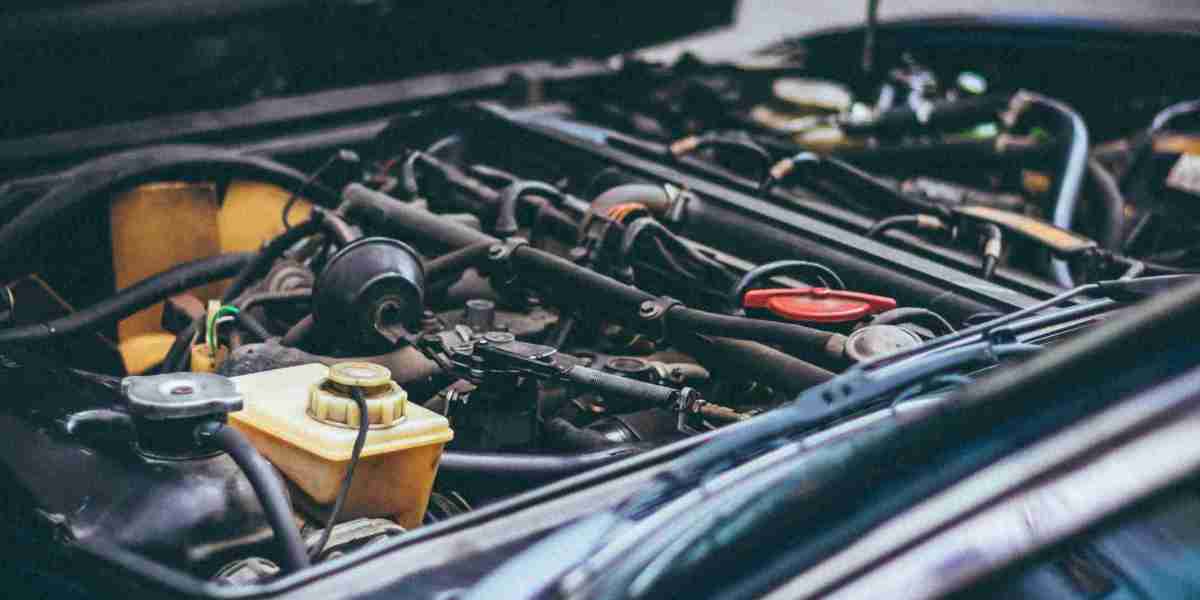Carrying out automotive performance upgrades refers to modifying various aspects of a vehicle to enhance its performance, such as speed, acceleration, handling, and overall driving experience. These upgrades can involve alterations to the engine, transmission, suspension, exhaust system, brakes, aerodynamics, and other components.
Some common examples of automotive performance upgrades include:
- Engine modifications: This may involve installing aftermarket engine accessories such as performance air intakes, high-flow exhaust systems, turbochargers, superchargers, or engine tuning and software calibration to increase horsepower, torque, and overall engine efficiency.
- Suspension upgrades: Upgrading suspension components such as shocks, springs, sway bars, and bushings can improve handling, reduce body roll, and enhance stability, especially during high-speed driving or cornering.
- Brake enhancements: Upgrading brake pads, rotors, callipers, and brake lines can improve stopping power, reduce brake fade, and enhance overall braking performance, crucial for high-performance driving situations.
- Transmission modifications: Upgrading transmission components or installing aftermarket transmission controllers can improve gear shifting speed, efficiency, and overall performance.
- Aerodynamic improvements: Installing aerodynamic body kits, spoilers, splitters, or diffusers can reduce drag, increase downforce, and improve overall stability at high speeds.
- Performance tyres and wheels: Upgrading to high-performance tyres with better grip and larger wheels can improve traction, cornering abilities, and overall handling characteristics.
- Engine management systems: Installing aftermarket engine management systems or performance chips can optimise engine performance by adjusting fuel delivery, ignition timing, and other parameters to maximise power and efficiency.
- Weight reduction: Removing excess weight from the vehicle through the use of lightweight materials or removing unnecessary components can improve acceleration, handling, and overall performance.
Performance upgrades should be done carefully, considering factors such as compatibility, safety, and legal regulations, and they may also void warranties provided by the vehicle manufacturer. Additionally, proper installation and tuning by experienced professionals are crucial to ensuring the reliability and effectiveness of performance upgrades.
Can you do vehicle performance upgrades on your own, or is it better to get a professional to do it?
Whether you can perform vehicle performance upgrades on your own or need a professional will depend on many factors:
- Skill and Experience: Some upgrades, such as installing aftermarket exhaust systems or air intake kits, may be relatively straightforward and can be done by DIY enthusiasts with basic automotive knowledge and tools. However, more complex upgrades, such as engine tuning or transmission modifications, may require advanced mechanical skills and specialised equipment.
- Safety: Performing performance upgrades incorrectly can compromise the safety and reliability of your vehicle. It is crucial to understand the potential risks and ensure that the upgrades are installed properly to avoid accidents or damage to the vehicle.
- Warranty Considerations: Modifying your vehicle may void its warranty, depending on the terms and conditions set by the manufacturer. If you are concerned about warranty coverage, it may be wise to consult with a professional who can advise you on the potential impact of the upgrades on your warranty.
- Legal Compliance: Some performance upgrades, particularly those related to emissions or vehicle safety, may be subject to legal regulations in your region. A professional mechanic or automotive technician can ensure that the upgrades comply with relevant laws and regulations.
- Optimal Performance: Professionals with experience in performance upgrades can provide valuable expertise in selecting the right components, tuning the vehicle for optimal performance, and ensuring that the upgrades work together seamlessly.
While some simple performance upgrades can be done by DIY enthusiasts, more complex modifications are often best left to professionals who have the necessary skills, experience, and equipment to ensure that the upgrades are installed correctly and safely. Consulting with a professional can also help you make informed decisions about which upgrades are best suited to your vehicle and your driving needs.
What are some performance upgrades you can do yourself?
There are several performance upgrades that you can do yourself, especially if you have some basic automotive knowledge and access to the necessary tools. Here are some examples:
- Air Intake Upgrades: Installing a high-performance air intake kit can improve airflow to the engine, resulting in increased horsepower and torque. This upgrade typically involves removing the stock air intake system and replacing it with an aftermarket intake kit, which often includes a high-flow air filter and intake tube.
- Exhaust System Modifications: Upgrading your vehicle's exhaust system can improve engine performance and sound. This can include installing a high-performance aftermarket exhaust system, replacing the stock muffler with a performance muffler, or adding exhaust headers for better exhaust flow.
- Suspension Upgrades: Upgrading your vehicle's suspension can enhance handling and stability. You can install aftermarket suspension components such as performance shocks, struts, springs, sway bars, and bushings. This upgrade typically requires basic mechanical skills and tools to install.
- Brake Upgrades: Upgrading your vehicle's brakes can improve stopping power and overall braking performance. You can replace the stock brake pads and rotors with high-performance aftermarket options, upgrade to stainless steel braided brake lines for improved pedal feel, or install larger brake callipers and rotors for enhanced braking performance.
- Tuning: Tuning your vehicle's engine management system can optimise performance by adjusting parameters such as fuel delivery, ignition timing, and turbo boost levels. This can be done using standalone engine management systems, performance chips, or handheld tuners, depending on your vehicle's make and model.
- Wheel and Tyre Upgrades: Upgrading your vehicle's wheels and tyres can improve traction, handling, and overall performance. You can install larger wheels for a more aggressive look and upgrade to high-performance tyres with better grip and handling characteristics.
- Weight Reduction: Removing excess weight from your vehicle can improve performance and acceleration. This can include removing unnecessary interior components, replacing heavy stock parts with lighter aftermarket options, or installing lightweight body panels.
- Aerodynamic Modifications: Improving your vehicle's aerodynamics can reduce drag and improve high-speed stability. This can include installing aerodynamic body kits, splitters, spoilers, or diffusers to enhance airflow around the vehicle.
When performing DIY performance upgrades, it is important to carefully follow installation instructions, use proper tools and safety equipment, and ensure that the upgrades are compatible with your vehicle. If you are unsure about any aspect of the installation process, consult with experienced enthusiasts or professionals for guidance.




